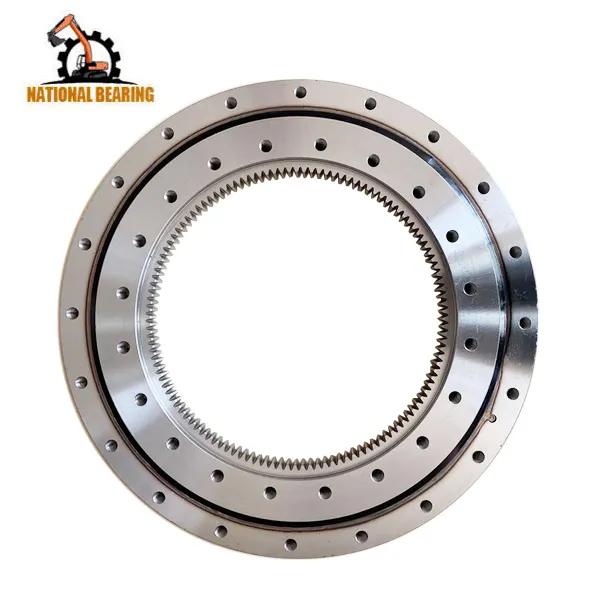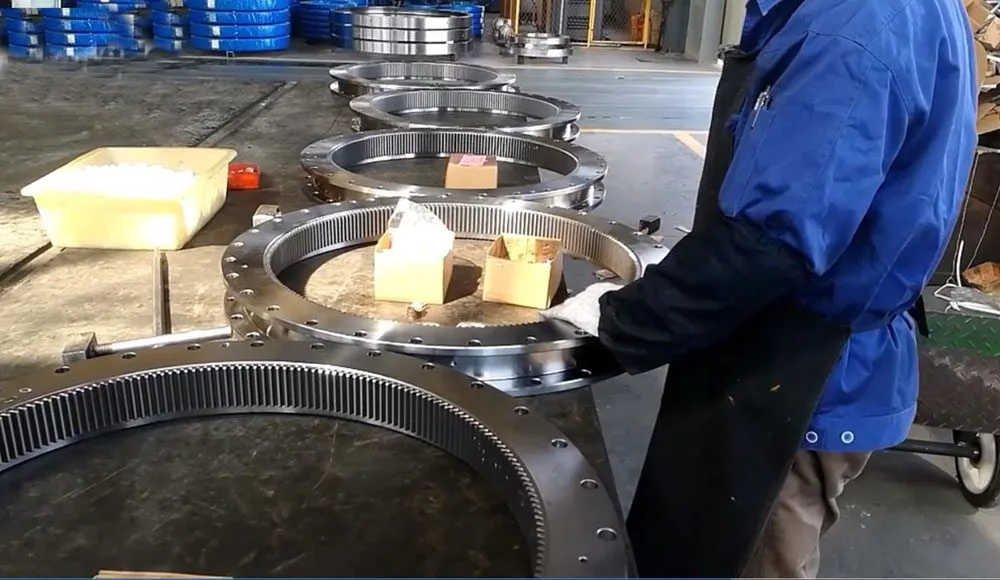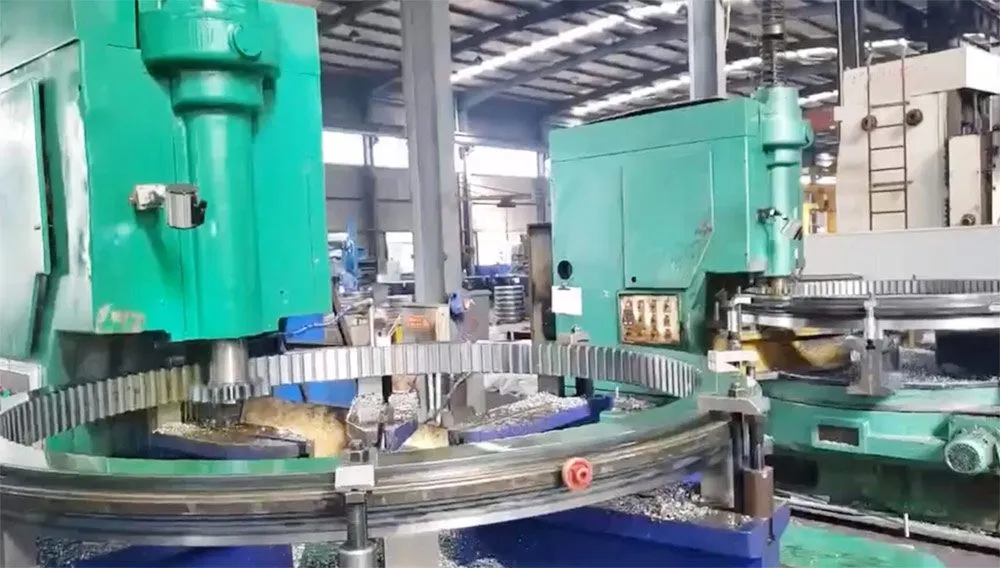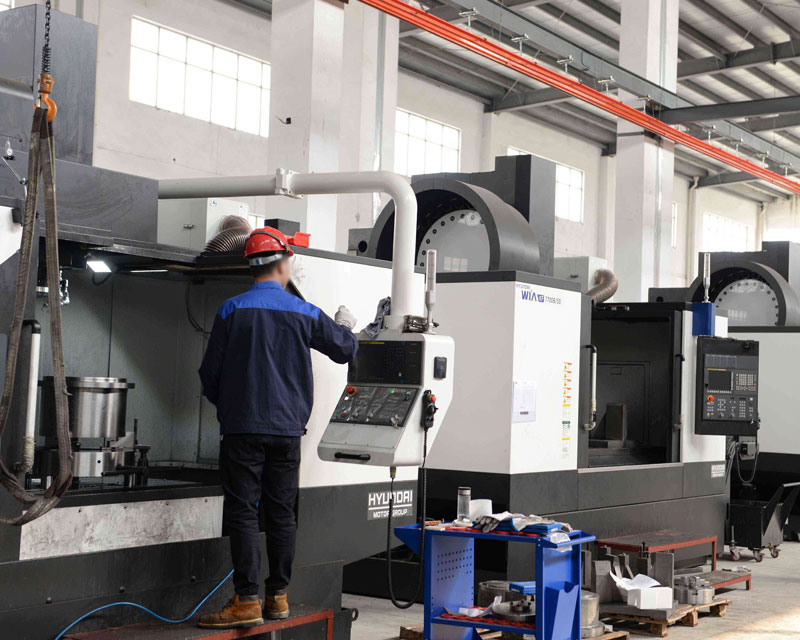
Slewing rings are critical components in engineering machinery, enabling rotational movement in excavators and other heavy equipment. However, due to manufacturing defects or external factors, these bearings can experience raceway peeling and broken teeth, leading to operational issues. This article provides a detailed guide on identifying and repairing these problems to ensure the longevity and efficiency of your equipment.
Excavator slewing rings are essential for the smooth rotational function of heavy machinery. Over time, these components may suffer from raceway peeling and broken teeth due to material defects or external damage. Addressing these issues promptly and effectively can prevent further damage and costly replacements. This guide covers the symptoms of raceway peeling, methods for repairing damaged raceways, and techniques for fixing broken teeth.
Raceway peeling can be challenging to detect externally, but certain symptoms can indicate this issue. Based on extensive experience, the following signs suggest raceway peeling:
If these symptoms are present, it is crucial to repair the peeling promptly to prevent further damage and potential scrapping of the entire slewing ring.

Following this method ensures that the raceway operates smoothly even after long-term use.

Broken teeth in slewing rings can result from:
Repairing raceway peeling and broken teeth in excavator slewing rings is crucial for maintaining the performance and longevity of heavy machinery. By following the detailed methods outlined in this guide, you can effectively address these issues, ensuring reliable operation and reducing downtime.

A: The replacement frequency depends on the excavator’s usage and operating conditions. Regular inspections and timely replacement when signs of wear or damage are detected are recommended. For machines operating in harsh environments or under heavy loads, more frequent inspections may be necessary to ensure optimal performance.
A: Signs of a failing sealing ring include hydraulic oil leakage, abnormal noises, vibrations during operation, and visible wear or damage to the sealing ring. If any of these symptoms are observed, it is crucial to inspect the sealing ring and replace it if necessary to prevent further damage and maintain machine performance.
A: While it is possible to replace the sealing ring yourself, it is recommended to hire a professional if you lack the necessary tools, skills, or experience. Proper installation is critical to ensure the sealing ring functions correctly and to avoid potential damage to the slewing ring or other components. Hiring a professional ensures the job is done accurately and efficiently, reducing the risk of future issues.